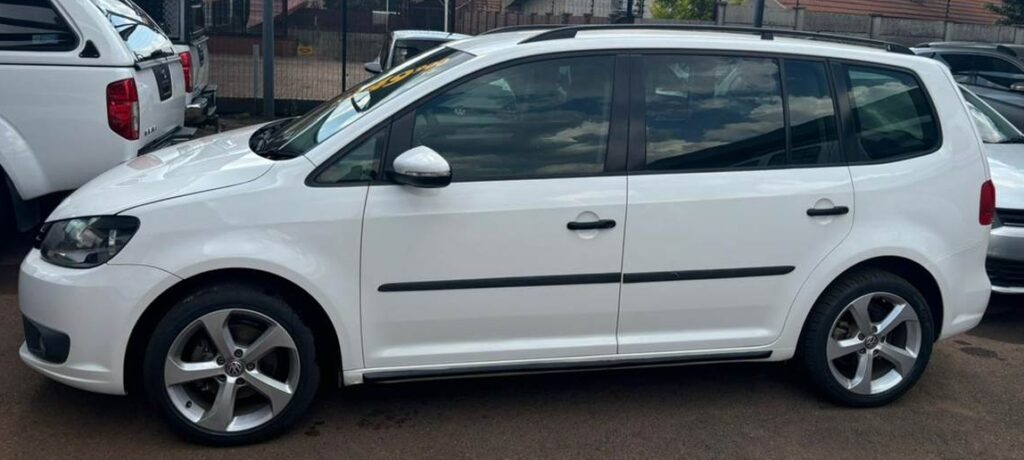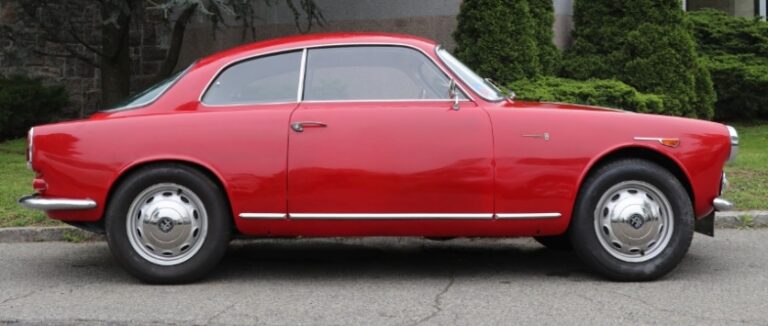The Evolution of the Volkswagen Touran
The Volkswagen Touran has established itself as a versatile, family-oriented compact MPV (multi-purpose vehicle) since its debut, combining practicality, comfort, and Volkswagen’s signature engineering. Over the years, the Touran has evolved through multiple generations, reflecting advancements in automotive technology, changing consumer preferences, and increasingly stringent emissions and safety standards. This article traces the full history of the Volkswagen Touran, detailing its production years, model variants, trim levels, and key features throughout its evolution.
First Generation (Typ 1T; 2003–2015)
Introduction and Development
Volkswagen launched the first-generation Touran in 2003, targeting the compact MPV segment that was gaining popularity in Europe. Built on the Volkswagen Group A04 (PQ35) platform, shared with models like the Golf Mk5, the Touran was designed to offer spaciousness, versatility, and Volkswagen’s hallmark quality.
Production Years: 2003–2015
Key Features and Design
- Body and Dimensions: The first-gen Touran measured approximately 4.4 meters in length, with a wheelbase of around 2.6 meters, providing ample interior space while maintaining a compact footprint.
- Seating and Interior: Initially available with 5 seats, the Touran was later offered with 7 seats as an option, with flexible configurations including fold-flat seats for increased cargo capacity.
- Engine Options: The lineup included a range of petrol and diesel engines, such as:
- 1.6L FSI petrol (105 PS)
- 2.0L FSI petrol (150 PS)
- 1.9L TDI diesel (105 PS)
- 2.0L TDI diesel (140 PS)
Trim Levels and Variants
Throughout its production, the first-generation Touran was marketed with multiple trims and special editions:
- S: The base trim, offering essential features such as air conditioning, power windows, and basic audio.
- SE: Included additional comfort and convenience features like alloy wheels, cruise control, and upgraded interior materials.
- SE Family: Focused on family-oriented features, including rear parking sensors and a more comprehensive audio system.
- Sport and Comfortline: Higher trims that added sporty styling cues, leather upholstery, and advanced multimedia options.
Facelifts and Updates
The first-generation Touran saw several updates:
- 2007 Facelift: Introduced minor exterior updates, new engine variants, and improved interior features, including enhanced infotainment systems.
- 2010 Facelift: Brought in refreshed front and rear styling, improved safety features such as optional ESP (Electronic Stability Program), and additional engine options like BlueMotion Technology variants for better fuel economy.
Notable Features
- Safety: Equipped with front airbags, side airbags, and optional curtain airbags; Electronic Stability Control (ESC) became standard on later models.
- Technology: Basic audio systems, optional navigation, and rear parking sensors.
Second Generation (Typ 5T; 2015–2022)
Development and Launch
Building on the success of the first generation, Volkswagen introduced the second-generation Touran in 2015. It was built on the MQB (Modular Transverse Matrix) platform, which underpins many current VW models, allowing for improved interior space, weight reduction, and technological integration.
Production Years: 2015–2022
Design and Features
- Exterior: The second-gen Touran adopted a more modern, sleek design with sharper lines, a prominent grille, and LED lighting options.
- Interior: Significantly upgraded, with a focus on digital interfaces, higher-quality materials, and flexible seating arrangements—up to 7 seats with the option of sliding second-row seats for increased comfort.
- Technology: Features included a digital cockpit (digital instrument cluster), VW’s MIB infotainment system with touchscreen displays ranging from 6.5 to 8 inches, Apple CarPlay, Android Auto, and optional navigation systems.
Engine Lineup
Engine options expanded and improved for efficiency and emissions compliance:
- Petrol Engines:
- 1.2L TSI (85–115 PS)
- 1.4L TSI (125–150 PS)
- 1.5L TSI (150 PS, with BlueMotion variants)
- Diesel Engines:
- 1.6L TDI (95–115 PS)
- 2.0L TDI (150 PS, with bi-turbo options)
Trim Levels and Variants
The second-generation Touran was offered in several trim levels, tailored to different customer preferences:
- Trendline: The standard entry-level trim, including essentials such as air conditioning, basic infotainment, and manual transmission options.
- Comfortline: Added features like cruise control, alloy wheels, upgraded audio systems, and additional interior comfort features.
- Highline: Top-tier trims with leather upholstery, panoramic sunroof, parking sensors, LED headlights, and advanced driver assistance systems such as adaptive cruise control and lane assist.
- R-Line: A sportier variant featuring R-Line styling cues, sport suspension, and enhanced interior trim.
Special Editions and Packages
Volkswagen released several special editions of the Touran, such as:
- Touran United: Featuring unique badging, exclusive paint options, and additional tech features.
- Black Edition: Focused on aesthetic enhancements with blacked-out exterior elements and upgraded interior materials.
Safety and Technology
The second-generation Touran saw significant advancements:
- Safety: Standard inclusion of multiple airbags, ABS, ESC, and optional safety packages including blind-spot monitoring, rear cross-traffic alert, and automatic emergency braking.
- Assistance Systems: Parking assist, rearview cameras, adaptive cruise control, and lane-keeping assist became available or standard depending on trim.
- Connectivity: Integration of smartphone connectivity, wireless charging, and digital displays.
Third Generation (Typ 5S; 2022–Present)
Introduction and Design Philosophy
In 2022, Volkswagen launched the third-generation Touran, emphasizing increased digitalization, efficiency, and versatility. It continues to serve as a family-friendly vehicle but with a more modern aesthetic and cutting-edge technology.
Production Years: 2022–present
Design and Dimensions
- Exterior: The latest Touran features a more streamlined, SUV-inspired design with sharper LED headlights, a wider grille, and a more aerodynamic profile.
- Interior: Focused on digital interfaces, with a fully digital cockpit, large touchscreen infotainment system, and optional augmented reality head-up display.
- Seating: Maintains the 7-seat configuration, with sliding and fold-flat seat arrangements for maximum flexibility.
Powertrain Options
The new Touran offers a range of efficient powertrains:
- Petrol: Mild hybrid variants with 1.5L TSI engines, producing 150 PS, with 48V mild-hybrid systems for improved fuel economy.
- Diesel: 2.0L TDI engines continue, meeting stricter emissions standards.
- Electric and Plug-in Hybrid Variants: Under development or available in certain markets, aligning with VW’s broader electrification strategy.
Trim Levels and Features
- Touran Life: Entry-level with essential tech and comfort features.
- Touran Style: Mid-range, adding upgraded infotainment, driver assistance, and aesthetic enhancements.
- Touran R-Line: Sportier styling cues, sport suspension, and premium interior touches.
- Top-tier trims: Incorporate advanced safety systems, digital assistants, panoramic sunroof, and premium audio.
Safety and Technology
The latest Touran emphasizes safety with features like:
- Advanced Driver Assistance: Including semi-autonomous driving features, lane keep assist, adaptive cruise control, and parking assist.
- Connectivity: Wireless smartphone integration, over-the-air updates, and integrated navigation systems.
- Interior: Premium materials, ambient lighting, and customizable digital displays.
.
RepairSurge Online Repair Manuals Replace Bulky Books With Reliable Digital Information!
Faster And Cheaper Than Traditional Printed Manuals, Users Get Instant Access To The Repair Information They Need For Any Car, Truck, Van or SUV:
.
Summary and Conclusion
The Volkswagen Touran has undergone significant evolution since its inception in 2003. Starting as a practical, family-oriented MPV with flexible seating and modest technology, it has matured into a highly advanced vehicle with sophisticated driver assistance, digital interfaces, and efficient powertrains. Each generation has responded to market demands and technological advancements.
Key Highlights:
- First Generation (2003–2015): Focused on practicality, offering multiple trim levels and engine choices, with incremental updates.
- Second Generation (2015–2022): Brought modern design, digital technology, and safety features, along with a broader engine lineup.
- Third Generation (2022–present): Emphasizes connectivity, safety, and efficiency, aligning with VW’s electrification and digital strategies.
The evolution of the Volkswagen Touran exemplifies the broader trends in the automotive industry: increased emphasis on technology, safety, and environmental sustainability, all while maintaining the core values of versatility and quality. Its ongoing development ensures the Touran remains a relevant and competitive choice for families worldwide.








